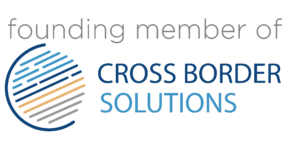What are critical success factors in management?
Assessment and review of critical success factors are an important means to be able to achieve goals in the company. They help an organisation or department to focus attention on the essential factors that need to be improved. As a first step, they have to be defined in a meaningful way in order to be able to measure the degree of achievement. The right understanding and approach can significantly help to make complex issues tangible.
In this article, we will introduce you to the critical success factors in management, that help with setting realistic goals, driving implementation and ultimately also quantifying success.
Wie werden kritische Erfolgsfaktoren (KEFs) definiert?
Compared to an ordinary success factor, a CSF makes a significant contribution to the success of an organisation or department. This is why we sometimes speak of key factors, which are of central importance for the achievement of overall or partial goals. They are often an integral part of a company’s business strategy and can be implemented at both project and company level, among other things.
They are always overarching strategic goals that usually go hand in hand with several KPIs (Key Performance Indicator) to make progress more quantifiable. For example, a company may set an increase in market share as a critical success factor. This would have considerable added value for the company – but exactly which KPIs or measures are used for this is not initially part of this consideration.

What types of critical success factors are there?
There are several areas that further subdivide what success factors are and how they can be defined in more detail. The subdivision can help to get a better overview and to describe goals more precisely.
Sector-specific
Here the focus is on critical success factors that may be particularly relevant to a specific industry. For example, if the company is active in the tech sector, then innovative strength can be an important indicator. In the service sector, on the other hand, it may be excellent customer service or high customer satisfaction.
Competitive
A competitive CSF is not about comparing your own company with competitors, but about customers’ perceptions and how they view the competitive situation. For example, one company may be seen as a luxury manufacturer, while the other may be known more as a price leader. In both cases, success factors can be clearly specified for the respective company to specifically strengthen the desired perception.
Time-related
Time-related critical success factors are short-term or temporary factors that have an impact on the company’s success. These are often characterised by unexpected or temporary challenges that need to be overcome. For example, setting up a new location may require more staff in the short to medium term in order to achieve the set project management goals.
Environmental
Environmental critical success factors can also have an important influence on the success of a company. Market and economic data often determine the success or failure of an entire industry, country or world. But these also include changes in the geopolitical landscape, the increasing and volatile change in markets, and new external regulations and conditions driven by individual country or continental policies.
Leadership-related
Finally, there are the leadership-related success factors, which are limited to one person or position in the company. Professional management is more important today than ever before, so an experienced interim manager with leadership skills can also improve risk and resource management and contribute to the resolution process in key phases. Driven by the environment, small and medium-sized enterprises must increasingly adapt the professionalisation of their own management structures and can therefore involve experienced interim managers at any time.
How to get your CSFs?
Essentially, it only takes a few steps to identify and agree on suitable critical success factors in your company or project management. These will then help you to create tangible added value and strengthen your own competitiveness.
In summary, these are the following steps:
- Create a strategic plan
- Agree on the strategic plan with the management level
- Identify and assign Critical Success Factors (CSF)
- Define KPIs and assign them to CSFs
- Measure and drive goal achievement
Now to provide a more detailed description of each individual step so that the implementation process can proceed as smoothly as possible.
1. Create a strategic plan
A strategic plan forms the basis from which all CSFs can be derived. So, define your business strategy for the next three to five years and create a corresponding plan. This will then serve as the perfect cornerstone for determining what is critical to success and what is not.
2. Agree on the strategic plan with the management level
The second step is to consult with the management level. Even in SMEs, there are often many important stakeholders who must be involved in defining the strategic plan and CSFs. It may even make sense to create a project team to ensure professional strategic management afterwards. The work involved should not be underestimated, which is why more and more companies chose to rely on experienced interim management for this.
3. Identify and assign critical success factors (CSF)
In this step, it is important to identify critical success factors and assign or share them with the right departments and teams. Base this on the overarching goals of the strategy or on key business processes. For example, if the strategic goal is to become the innovation leader in an industry, then a CSF can be the innovation strength. This can then be linked to a meaningful KPI in the next step.
4. Define KPIs and assign them to CSFs
Once the CSFs have been identified, their achievement must also be measurable and traceable. The right KPIs (Key Performance Indicators) play an essential role because they are quantifiable and therefore measurable. In the above example of innovative strength, you could use the number of patents filed as a measure. This would provide a measurable and transparent KPI that can help to make the achievement of the success-critical factor “innovation strength” tangible.
5. Measuring and driving target achievement
Strategic goals and critical success factors only help a company if it can also measure their degree of fulfilment. From this, important measures can be derived to drive success even further. Ultimately, it is of great importance to constantly monitor and control progress to promote the best possible results and development.
Conclusion
Critical success factors can help a company to focus on the important areas and thus create tangible added value. However, it is always important to focus on the right strategic goals and, if necessary, to rely on expert help from outside the company.
Our experienced and professional interim managers help your company to identify and achieve the critical success factors. This will give you a significant competitive advantage in an ever-growing and highly competitive business environment.
We would be happy to advise you – get in touch now.




